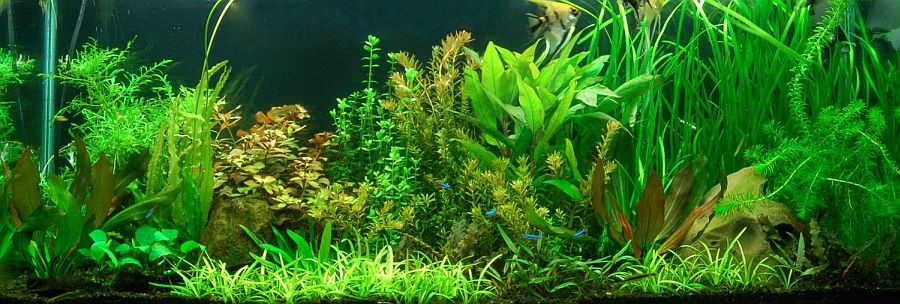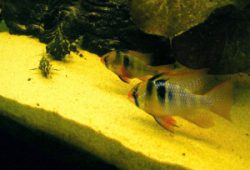Water Current in Aquariums
In the article I share what I learned about Water Current in Aquariums. There are many variables to think about in making an aquarium atmosphere, whether or not a easy fish-only tank, an aquarium approximating river conditions, or a marine reef aquarium. Filtration, heating, lighting, and tank size and configuration are all problems that must be addressed. One usually overlooked variable, but, is current. Any natural underwater surroundings is characterized by nearly constant water movement, which fish, plants, and alternative aquatic life have naturally tailored to. While not providing a water current in your aquarium, your aquatic surroundings will not be authentic, and you may inhibit the healthy growth of your aquatic life.

A water current is significantly necessary for reef aquariums. Currents flow into and bring nutrients to corals, clams, and other invertebrates that are stationary. Currents conjointly clean coral by removing waste produce and sediment; if debris is allowed to accumulate on coral, algae could grow uninhibited. Also, currents encourage your fish to swim, helping them develop muscle tissue and burn off excess fat.
Water movement in your aquarium also supplements gas exchange. Varied gasses naturally form and accumulate in aquarium water; carbon dioxide is created by fish respiration, as an example, and gasses such as nitrogen, sulfur, and methane are made by bacteria that metabolize waste products. Water currents transport these gasses from stagnant areas to water columns, where they are released into the atmosphere. Active currents constantly move water from one level in your aquarium to another, allowing oxygen-poor water near the bottom of your tank to come back into contact with oxygen-made water nearer to the surface. This overall movement reduces the concentration of harmful gasses and your tank, and increases levels of oxygen.
One other benefit of water movement is that active currents in your tank efficiently transport waste material to your tank’s filter, whether you have got a biological, chemical, or mechanical filter, or some combination thereof. Waste material and debris that would otherwise suspend suspended in your tank, or settle into laborious-to-reach areas, are instead swept up by currents and eventually disposed of by your filter. And, as a result of active currents enrich the oxygen levels in your tank, any biological filtration device that you have put in can be aided. This supplemental filtration is notably necessary for reef tanks.
There are 3 primary types of movement that you’ll be able to produce in your aquarium. Laminar flow could be a steady, unidirectional flow, typically created by a computer called a “powerhead” that is positioned in an exceedingly designated space in your tank. Surge is unidirectional like laminar flow, but isn’t steady; surge is an alternating current of strong forward flow followed by a weaker back flow. Surge closely approximates what you may see if you’re snorkeling in an exceedingly marine surroundings, as schools of fish move forward in tandem, then halt and sweep backward as a single unit. Finally, turbulence is the random flow of water in multiple directions. Turbulence is the most natural kind of water movement, and the foremost difficult to replicate in an aquarium environment.
There are many devices that you’ll be able to purchase that make currents in your aquarium. Most typical are powerheads; these cheap devices manufacture solely laminar currents, however you’ll usually produce multidirectional currents with powerheads by fitting them with PVC piping, or by positioning 2 or a lot of powerheads at different locations in your tank. Powerheads are ideal for freshwater tanks recreating a river atmosphere, encouraging river fish to stay strong and healthy. If your tank is stocked with stationary invertebrates, do not aim a powerhead directly at the invertebrate, as the present might be too intense. However, you’ll aim the powerhead at bound areas where debris could build up.
An oscillating powerhead rotates among the aquarium, directing water in various directions. Installing several oscillating powerheads can recreate the turbulence required by reef ecosystems. A “wavemaker” is another device that generates turbulence by emulating the alternating robust currents and weak currents that characterize most freshwater and marine environments. A wavemaker is an electronic timing device that connects with many submerged powerheads, turning the powerheads on and off at predetermined intervals. Wavemakers can be programmed, for example to produce slower currents at nighttime or during feeding times.
A water flow diverter is however another device that mixes up currents in your tank. These diverters are installed on your filter’s come, directing the filter outflow in several directions. You’ll be able to connect diverters to every different, making a multidirectional outflow. Water flow diverters are effective in making turbulence near the surface of your aquarium, so facilitating oxygen exchange.
Be positive that your currents are not too strong; pay shut attention once you have established a pattern of currents, and observe how your fish and notably invertebrate life responds. Aquatic life is adaptable, however coral can tend to grow around an area where currents are too strong. Also, pay attention to any salt spray, or bubbling and agitation, on the water surface. A fine layer of salt may eventually settle around your lighting, or into your heating or different devices, damaging these fixtures. If you notice excessive surface spray or effervescent, you’ll would like to reposition your current-creating devices.



